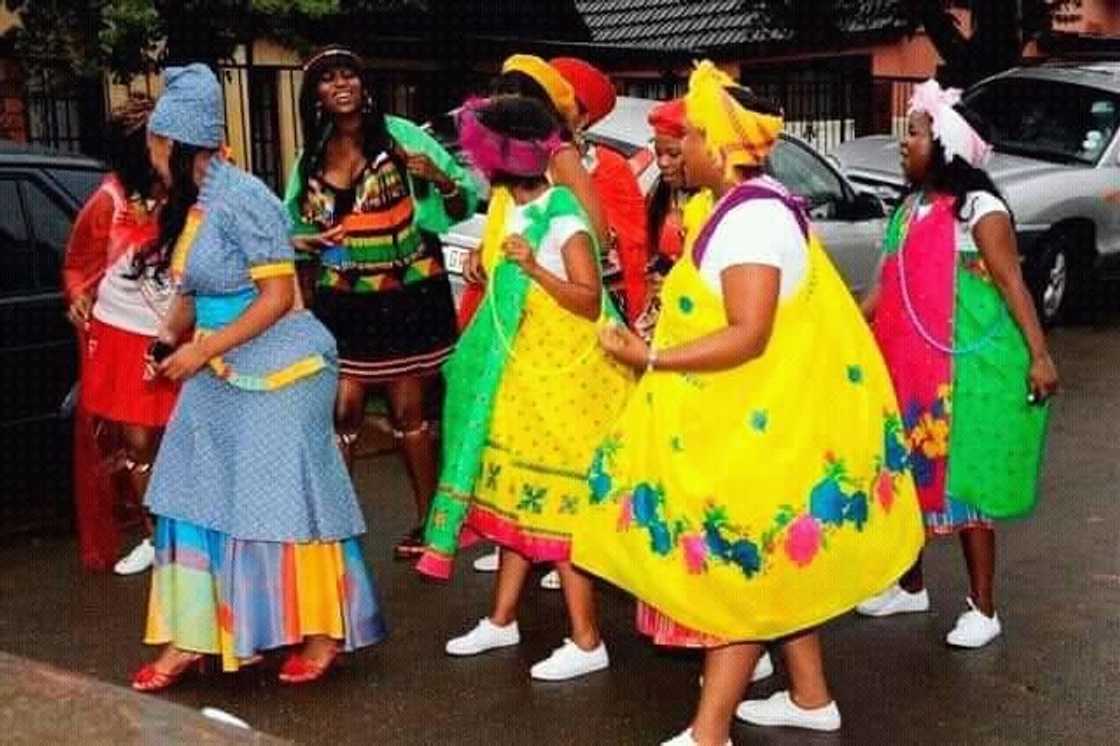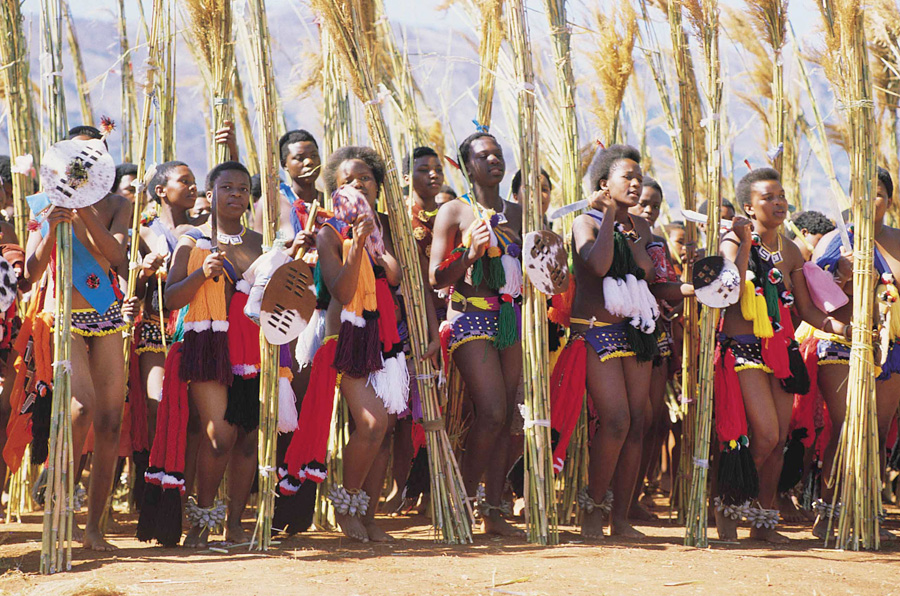The Single Strategy To Use For South African Culture Today
The Single Strategy To Use For South African Culture Today
Blog Article
4 Simple Techniques For South African Culture Today
Table of ContentsThe Greatest Guide To South African Culture TodayFascination About South African Culture TodayGetting The South African Culture Today To WorkIndicators on South African Culture Today You Should KnowSome Known Facts About South African Culture Today.All About South African Culture Today
This follows with singing and drum pounding. The couple after that consult with the senior citizens and chat about the importance of their union. A matter of importance in Zambian villages is the passing away of loved ones. All members of the town placed cash, effort and time together for the burial of the deceased.Songs and dancing is an extremely important facet of the Zambian society. The different tribal units have their very own dancing types; nevertheless, makishi is common among all tribes.
Unknown Facts About South African Culture Today
When it concerns songs, drums are made use of the most, with a variety of drumming ceremonies. In Zambia, bulk of individuals are Christian; Protestant and Roman Catholic. There are small groups of Muslims and Hindus, with the remainder complying with neighborhood indigenous tribal beliefs.

South African heritage and culture is exceptionally diverse, and includes various teams of individuals who each have their own practices and ideas. Having such a variety of people and societies is what makes South Africa so one-of-a-kind. In real sense of the expression, we are a rainbow country.
South Africa has approximately three hundred thousand Portuguese individuals living in it. Making it the 7th on the list of nations with the most Portuguese individuals in it outside of Portugal. Portuguese is not only a society, but it is likewise a language and a citizenship. Portuguese people originate from the nation of Portugal in Europe, nevertheless, as a result of Portugal (like several various other countries in Europe) checking out the globe and conquering various other countries throughout the 15th 20th centuries, South Africa has what we call Portuguese South African's living in it.
Little Known Facts About South African Culture Today.
Among the popular attributes of the topography is a plateau that covers practically two thirds of the center of the country. The plateau facility rises towards the southeast, where it climaxes in the Drakensberg variety, component of an escarpment that separates the plateau from the coastal locations. The Drakensburg consists of Champagne Castle, the greatest top in the nation.
The area north of the Witwatersrand, called the bushveld, slopes downward from eastern to west towards the Limpopo River, which forms the worldwide boundary. The western section of the plateau, the middleveld, likewise descends in the direction of the west and varies in elevation in between the highveld and bushveld. Between the Drakensburg and the eastern and southern shoreline, the land comes down to the sea.
Nearer the coast there is a low-lying level called the eastern lowveld. Southwest of the plateau the country ends up being gradually a lot more arid, paving the way to the stony desert of the Great Karroo, approached the east by the reduced, much better watered plateau of the Little Karroo. Separating the completely dry southerly inside from the sandy coastal of the southerly coastline and West Cape is one more array, the Langeberg.
The 5-Second Trick For South African Culture Today
The nation's racially, ethnically, and politically divided history has actually produced nationwide and subnational symbols that still function as symbols of the country, and others icons that are accepted just by particular teams. The monoliths to white inhabitant conquest and political prominence, such as the Afrikaner Voortrekker ("leader") Monolith in Pretoria and the Rhodes Monolith recognizing the British colonial realm contractor and Cape prime minister Cecil Rhodes, continue to be sectarian symbols.
The first contemporary occupants were the San ("bushman") hunter-gatherers and the Khoi ("Hottentot") peoples, that herded animals (South African culture today). The San may have existed for countless years and left evidence of their presence in thousands of ancient cavern paintings ("rock art"). Bantu-speaking clans that were the forefathers of the Nguni (today's amaZulu, amaXhosa, amaSwazi, and vaTsonga individuals) and Tswana-Sotho language groups (today's Batswana and Southern and Northern Basotho) moved down from east Africa as early as the fifteenth century

Both previous republics of the Orange Free State and Transvaal (South African Republic) were established by Afrikaner inhabitants who defeated and dispossessed the Basotho and Batswana. Lesotho would have been forcibly incorporated into the Orange Free State without the expansion of British defense in 1869. The best unification of the nation resulted from the South African War (18991902) in between the British and both Afrikaner republics, which lowered the nation to ruin at the start of the twentieth century.
Afrikaners traditionally considered themselves the just true South Africans and, while giving complete citizenship to all locals of European descent, refuted that standing to individuals of shade till the autonomous change of 1994. British South Africans try here maintain a sense of cultural and social connection to Great Britain without damaging their identification as South Africans.
What Does South African Culture Today Do?
The diversity and fragmentation within ethnic collections and the equilibrium of stress in between those teams during the twentieth century prevented interethnic civil problem. While intergroup tensions over sources, privileges, and political supremacy continue to be, those disputes are as likely to match Zulu versus Zulu as Zulu against Xhosa or African versus Afrikaner.
From colonial India, British vendors and administrators brought the rounded metal decorative roofing systems and slender shoelace job columns that that site still exemplify the verandas of homes arounds and cities throughout the country. Residences of prayer add an important architectural aspect even in the tiniest towns. Along with the rising steeples and timeless stonework of Afrikaans Dutch Reformed churches, Anglican churches, synagogues, mosques, and Hindu shrines give variety to the religious building scene.

Butchering and the brewing of standard grain beer are necessary in safeguarding the participation and goodwill of the forefathers who are taken into consideration the guardians of good luck, prosperity, and well-being. Indian areas keep their native culinary practices and apply them on Islamic and Hindu routine and ritualistic events. Afrikaners and Coloured individuals collect at weekend breaks and unique occasions at multifamily barbecues called braais, where neighborhood bonds are strengthened.
Because this was the key financial business of both black Africans and white homesteaders, dispute between those groups centered on the belongings of grazing land and animals. In 1867, the largest ruby deposits worldwide were uncovered at Kimberley in the west main area. The riches from those fields helped finance the exploitation of the best gold reef in the world, which was found on the Witwatersrand in 1886.
Some Of South African Culture Today
This brought about misconceptions and deliberate misrepresentation in the transactions of white inhabitants and government authorities with African principals during the colonial duration (South African culture today). In the facility of African reserves, some elements of communal and mainly "tribal depend on" land tenure were maintained, and also in white backwoods, forms of public period were still exercised in areas with African areas
After the democratic improvement of 1994, programs for land restitution, redistribution, and reform were set up, but progression has actually been slow-moving. The white minority still regulates eighty percent of the land. Following farming land invasions in Zimbabwe, the Division of visit this site Land Matters has promised to speed land redistribution.
Report this page